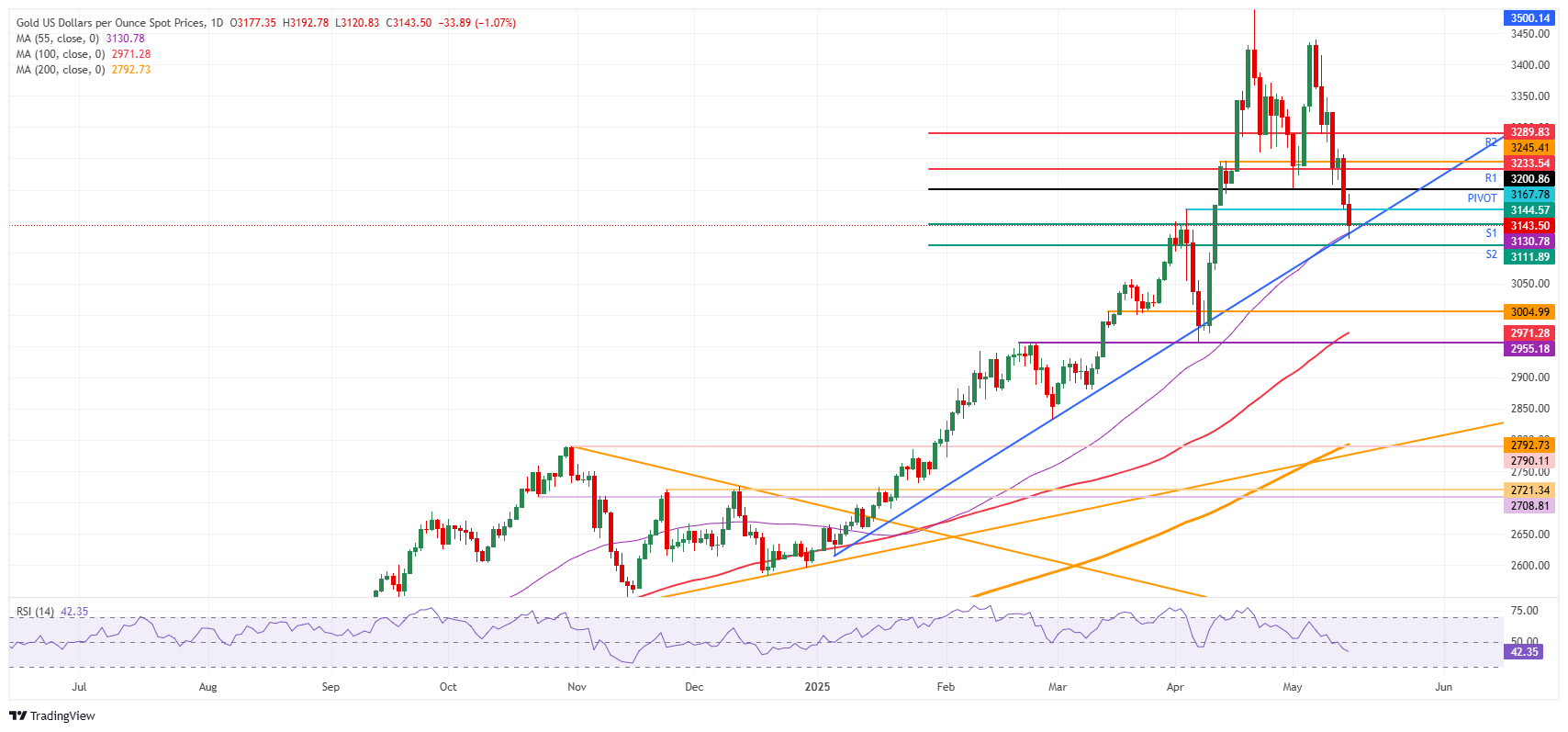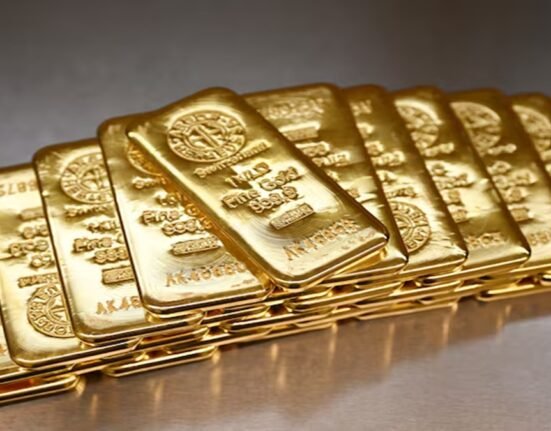- Gold price on the backfoot for a second straight day, down nearly 10% from its all-time high.
- The US administration softens its tone on several fronts, reducing safe-haven flows towards the precious metal.
- Bullion traders could expect Gold to retest the $3,000 level if further easing and Ukraine-Russia truce would materialize.
Gold (XAU/USD) slides towards $3,170 at the time of writing on Thursday after headlines from United States (US) President Donald Trump that led traders book more profits and sell more stake in their Gold holding. In his latest comments on Thursday during a visit to the Middle East, Trump said talks with Iran on a nuclear deal are possible, CNN reports. Trump added that both Syria and Yemen deserve a chance, which is seen as a huge step in defusing tensions in the Middle East.
These headlines led traders to sell Gold as they signal that global geopolitical tensions are easing. Meanwhile, progress in trade talks also added to bearish headwinds for the precious metal, with China suspending a ban on exports of items with both military and civil applications to 28 US companies. The détente between the two largest economies has reduced the bid for Gold already earlier this week, Bloomberg reports.
The attention for Gold traders also shifts to Turkey, where top US and European diplomats meet to discuss any possible breakthrough in the Russia-Ukraine war. Still, the chances of a major advance in the negotiations look unlikely as Russian President Vladimir Putin won’t attend the meetings.
Daily digest market movers: Fed to keep rates steady
- US yields are not helping in the case for some upside reprieve in Gold prices. The US 10-year benchmark rate keeps climbing higher towards 4.54% in early Thursday trading, way above the 4.11% seen at the start of May.
- On Wednesday, Vice Chair Philip Jefferson said that the Federal Reserve’s (Fed) policy is well positioned to respond in a timely way on a surprise drop or surge in inflation. Jefferson added that there is a high uncertainty that inflationary pressures would be temporary. Prospects of high interest rates for longer weigh on non-interest-bearing assets such as Gold.
- Hedge funds are rebalancing their holdings on Gold. First Eagle Investments’ $59 billion global fund, for example, maneuvered through April’s plunging markets by selling Gold and using the proceeds to buy freshly discounted stocks. The rebalancing trade helped the portfolio ride the rebound in equities and boosted its returns to almost 10% this year. Matthew McLennan of the First Eagle Global Fund is still bullish on Gold, but trimmed the position to prevent the fund from becoming overly concentrated, Bloomberg reports.
Gold Price Technical Analysis: Calls for $3,000 a surfacing
Gold is now quickly racking up losses and looks set to be facing some more downturn. Easing geopolitical tensions, trade war fears, and the Fed likely to keep its monetary policy unchanged for longer, all bearish elements for the Gold price, are eating away at its momentum. Once the 55-day Simple Moving Average (SMA) at $3,130 snaps and faces a daily close below, there is not much is in the way to avoid the Gold price from dropping towards $3,000 and lower.
On the upside, the pivotal technical level at $3,167 (April 3 high)is now overturned into a resistance and could be difficult to reclaim. Once through there, the daily Pivot Point comes in line with the big $3,200 figure. In case that level can be recovered, the R1 resistance at $3,233 and the R2 resistance at $3,289 are the following levels to watch, though a major catalyst would be needed to get it there.
On the other side, as already mentioned above, one level to watch is the 55-day SMA at $3,130. Once that gives way, the technical level at $3,004 (March 14 high), which roughly coincides with the $3,000 big marker, could be quickly tested. Further down, the 100-day SMA at $2,971 is the bottom level foreseen for now.

XAU/USD: Daily Chart
US-China Trade War FAQs
Generally speaking, a trade war is an economic conflict between two or more countries due to extreme protectionism on one end. It implies the creation of trade barriers, such as tariffs, which result in counter-barriers, escalating import costs, and hence the cost of living.
An economic conflict between the United States (US) and China began early in 2018, when President Donald Trump set trade barriers on China, claiming unfair commercial practices and intellectual property theft from the Asian giant. China took retaliatory action, imposing tariffs on multiple US goods, such as automobiles and soybeans. Tensions escalated until the two countries signed the US-China Phase One trade deal in January 2020. The agreement required structural reforms and other changes to China’s economic and trade regime and pretended to restore stability and trust between the two nations. However, the Coronavirus pandemic took the focus out of the conflict. Yet, it is worth mentioning that President Joe Biden, who took office after Trump, kept tariffs in place and even added some additional levies.
The return of Donald Trump to the White House as the 47th US President has sparked a fresh wave of tensions between the two countries. During the 2024 election campaign, Trump pledged to impose 60% tariffs on China once he returned to office, which he did on January 20, 2025. With Trump back, the US-China trade war is meant to resume where it was left, with tit-for-tat policies affecting the global economic landscape amid disruptions in global supply chains, resulting in a reduction in spending, particularly investment, and directly feeding into the Consumer Price Index inflation.







